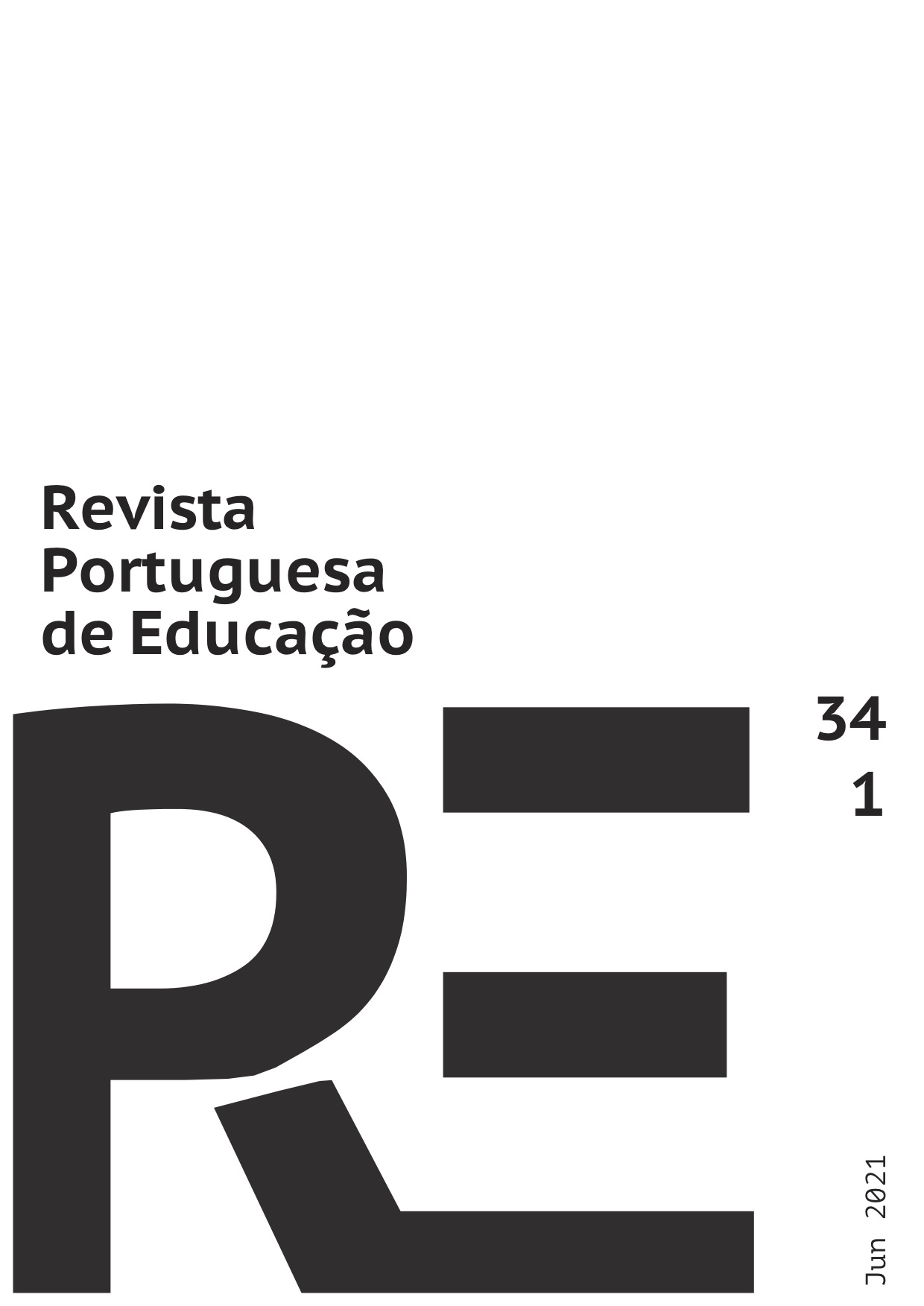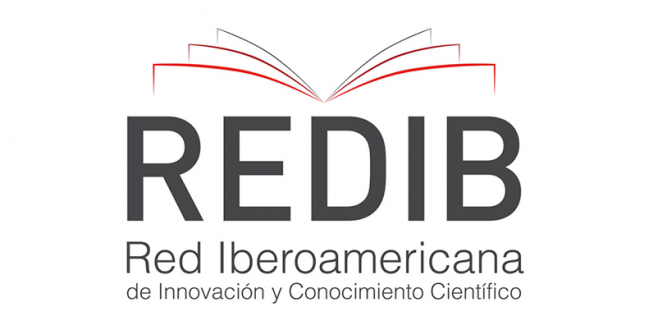Choosing a teaching career in Portugal: Motives and self-efficacy of master students
DOI:
https://doi.org/10.21814/rpe.18401Keywords:
Teaching, Intrinsic motives, Extrinsic motives, Teaching careerAbstract
This study analyzed students’ motives for choosing teaching as a career and its associations with sociodemographic variables, teacher education program characteristics, and self-efficacy. Participants were 183 student teachers (86% female) enrolled in different Portuguese Teacher Education Programs (master degree). Participants completed an on-line survey on their sociodemographic information and motives for their decision to become a teacher (Kiel, Geider, & Junger, 2004), and self-efficacy beliefs (Schwarzer & Jerusalem, 1995; Portuguese version by Araújo & Moura, 2011). The factorial analysis indicated four factors underlying the motives to become a teacher: (a) Characteristics of the profession, (b) Social influences, (c) Interest in the course or academic content, and (d) Promoting children's development. We found that, compared to other motives, students tend to attribute higher value to motives associated with promoting child development and the interest in the course/content. We also found statistically significant differences between the motives of students who chose a course that will allow them to teach in pre-school and/or elementary school (1str to 4th year) and those who chose a course that will allow them to teach specific subjects, as well as effects of the students’ age, gender and self-efficacy. Implications for the training of teachers are discussed.
This study analyzed students’ motives for choosing teaching as a career and its associations with sociodemographic variables, teacher education program characteristics, and self-efficacy. Participants were 183 student teachers (86% female) enrolled in different Portuguese Teacher Education Programs (master degree). Participants completed an on-line survey on their sociodemographic information and motives for their decision to become a teacher (Kiel, Geider, & Junger, 2004), and self-efficacy beliefs (Schwarzer & Jerusalem, 1995; Portuguese version by Araújo & Moura, 2011). The factorial analysis indicated four factors underlying the motives to become a teacher: (a) Characteristics of the profession, (b) Social influences, (c) Interest in the course or academic content, and (d) Promoting children's development. We found that, compared to other motives, students tend to attribute higher value to motives associated with promoting child development and the interest in the course/content. We also found statistically significant differences between the motives of students who chose a course that will allow them to teach in pre-school and/or elementary school (1str to 4th year) and those who chose a course that will allow them to teach specific subjects, as well as effects of the students’ age, gender and self-efficacy. Implications for the training of teachers are discussed.
Downloads
References
Araújo, M. & Moura, O. (2011). Estrutura factorial da General Self-Efficacy Scale (Escala de Auto-Eficácia Geral) numa amostra de professores portugueses. Laboratório de Psicologia, 9(1), 95-105.
Arbuckle, J. L. (1996). Full information estimation in the presence of incomplete data. In G. A. Marcoulides & R. E. Schumacker (Eds.), Advanced structural equation modeling (pp. 243-277). Lawrence Erlbaum Associates.
Azman, N. (2013). Choosing teaching as a career: Perspectives of male and female malaysian student teachers in training. European Journal of Teacher Education, 36(1), 113-130. https://doi.org/10.1080/02619768.2012.678483.
Bandura, A. (1993). Perceived self-efficacy in cognitive development and functioning. Educational Psychologist, 28, 117-148.
Bastick, T. (2000). Why teacher trainees choose the teaching profession: Comparing trainees in metropolitan and developing countries. Journal of Personality and Social Psychology, 80(5), 706-722. https://doi.org/10.1023/A:1004090415953.
Betz, N. E. & Hackett, G. (1981). The relationship of career-related self-efficacy expectations to perceived career options in college women and men. Journal of Counseling Psychology, 28(5), 399-410. https://doi.org/10.1037/0022-0167.28.5.399
Bilim, I. (2014). Pre-service elementary teachers’ motivations to become a teacher and its relationship with teaching self-efficacy. Procedia – Social and Behavioral Sciences, 152, 653-661.
Brown, T. A. (2006). Confirmatory factor analysis for applied research. New York, NY, US: The Guilford Press.
Bruinsma, M., & Jansen, E. P. W. A. (2010). Is the motivation to become a teacher related to pre-service teachers’ intentions to remain in the profession?. European Journal of Teacher Education, 33(2), 185-200. https://doi.org/10.1080/02619760903512927.
Direção-Geral do Ensino Superior (2018). Ingresso no ensino superior público, 2018-2019. República Portuguesa, Ciência Tecnologia e Ensino Superior. https://www.dges.gov.pt/coloc/2018/nota_cna18_1f_1.pdf.
Flores, M. A. (2012). A opção por um curso de ensino em tempos desafiadores: Motivações e expectativas de alunos futuros professores. In M. A. Cavalcante, A. F. de Freitas, L. C. V. Pizzi, N. L. F. Fumes, A. Lopes & M. L. Q. Freitas (Eds.), Formação docente em contextos de mudanças (pp. 23-40). UFAL.
Flores, M. A., & Niklasson, L. (2014). Why do student teachers enrol for a teaching degree? A study of teacher recruitment in Portugal and Sweden. Journal of Education for Teaching, 40(4), 328-343. https://doi.org/10.1080/02607476.2014.929883.
Fokkens-Bruinsma, M. & Canrinus, T. E. (2012). Adaptive and maladaptive motives for becoming a teacher. Journal of Education for Teaching, 38(1), 3-19. https://doi.org/10.1080/02607476.2012.643652.
Fokkens-Bruinsma, M. & Canrinus, T. E. (2014). Motivation to become a teacher and engagement to the profession: Evidence from different contexts. International Journal of Educational Research, 65, 65-74. https://doi.org/10.1016/j.ijer.2013.09.012.
Heinz, M. (2015). Why choose teaching? An international review of empirical studies exploring student teachers’ career motivations and levels of commitment to teaching. Educational Research and Evaluation, 21(3), 258-297. https://doi.org/10.1080/13803611.2015.1018278.
Huber, P. J. (1967). The behavior of maximum likelihood estimates under nonstandard conditions. Proceedings of the Fifth Berkeley Symposium on Mathematical Statistics and Probability, Volume 1: Statistics, 1(1), 221-233.
Johnston, J., Mckeown, E. & Mcewen, A. (1999). Choosing primary teaching as a career: the perspectives of males and females in training. Journal of Education for Teaching, 25(1), 55–64. https://doi.org/ 10.1080/02607479919673.
Jungert, T., Alm, F. & Thornberg, R. (2014). Motives for becoming a teacher and their relations to academic engagement and dropout among student teachers. Journal of Education for Teaching, 40(2), 173–185. https://doi.org/10.1080/02607476.2013.869971.
Keller-Schneider, M., Weiß, S. & Kiel, E. (2018). Warum Lehrer/in werden? Idealismus, Sicherheit oder “da wusste ich nicht besseres“?: Ein Vergleich von Berufswahlmotiven zwischen deutschen und schweizerischen Lehramtsstudierenden und die Bedeutung von länderspezifischen Bedingungen. Schweizerische Zeitschrift für Bildungswissenschaften, 40(1), 217-242.
Kiel, E., Geider, F. J. & Jünger, W. (2004). Motivation, selbstkonzepte und lehrberuf. Studienwahl und berufsperspektiven bei studierenden für das lehramt an grund-, haupt-und realschulen. Die Deutsche Schule, 96(2), 223-233.
Klassen, R. M., Al-Dhafri, S., Hannok, W. & Betts, S. M. (2011). Investigating pre-service teacher motivation across cultures using the teachers’ ten statements test. Teaching and Teacher Education, 27(3), 579-588. https://doi.org/10.1016/j.tate.2010.10.012.
Kyriacou, C., Hultgren, A., & Stephens, P. (1999). Student teacher motivation to become a secondary school teacher in England and Norway. Teacher Development, 3(3), 373-381. https://doi.org/10.1080/13664539900200087.
Lin, E., Shi, Q., Wang, J., Zhang, S. & Hui, L. (2012). Initial motivations for teaching: Comparison between preservice teachers in the United States and China. Asia-Pacific Journal of Teacher Education, 40(3), 227-248. https://doi.org/10.1080/1359866X.2012.700047.
Little, T. D., Preacher, K. J., Selig, J. P. & Card, N. A. (2007). New developments in latent variable panel analyses of longitudinal data. International Journal of Behavioral Development, 31(4), 357–365. https://doi.org/10.1177/0165025407077757.
Little, T. D., Slegers, D. W. & Card, N. A. (2006). A non-arbitrary method of identifying and scaling latent variables in SEM and MACS models. Structural Equation Modeling: A Multidisciplinary Journal, 13(1), 59-72. https://doi.org/10.1207/s15328007sem1301_3.
Moran, A., Kilpatrick, R., Abbot, L., Dallat, J. & McClune, B. (2001). Training to teach: motivating factors and implications for recruitment. Evaluation & Research in Education, 15(1), 17-32. https://doi.org/10.1080/09500790108666980.
Nóvoa, A. (1999). Os professores na virada do milênio: do excesso dos discursos à pobreza das práticas. Educação e Pesquisa, 25(1), 1-15. https://doi.org/ 10.1590/S1517-97021999000100002 .
Organização para a Cooperação Económica e Desenvolvimento [OCDE]. 2018. Education at a Glance 2018: OECD Indicators. OECD Publishing. https://doi.org/ 10.1787/eag-2018-en.
Pedro, N. & Peixoto, F. (2006). A satisfação profissional e auto-estima dos professores. Análise Psicológica, 24(2), 247-262. http://www.scielo.mec.pt/scielo.php?script=sci_arttext&pid=S0870-82312006000200010.
R Core Team (2013). R: A language and environment for statistical computing. Vienna, Austria: R Foundation for Statistical Computing. http://www.r-project.org/.
Rosseel, Y. (2012). Iavaan: An R package for structural equation modeling. Journal of Statistical Software, 48(2), 1-36. https://doi.org/10.18637/jss.v048.i02.
Schmitz, E. & Leidl, E. (1999). Brennt wirklich aus, wer entflammt war? Studie II: Eine LISREL-Analyse zur Burnout-Prozess bei Lehrern. Psychologie in Unterricht und Erziehung, 46, 302-310. http://www.edgar-schmitz.de/download/brennt.pdf.
Schwarzer, R., & Jerusalem, M. (1995). Generalized Self-efficacy Scale. In J. Weinman, S. Wright & M. Johnston (Eds.), Measures in Health Psychology: A User’s Portfolio. Causal and Control Beliefs (pp. 35–37). NFER-NELSON.
Schweizer, K. (2010). Some guidelines concerning the modeling of traits and abilities in test construction. European Journal of Psychological Assessment, 26(1), 1-2. https://doi.org/10.1027/1015-5759/a000001.
Sinclair, C. (2008). Initial and changing student teacher motivation and commitment to teaching. Asia‐Pacific Journal of Teacher Education, 36(2), 79-104. https://doi.org/10.1080/13598660801971658.
Struyven, K., Jacobs, K. & Dochy, F. (2013). Why do they want to teach? The multiple reasons of different groups of students for undertaking teacher education. European Journal of Psychology of Education, 28(3), 1007-1022. https://doi.org/10.1007/s10212-012-0151-4.
Watt, H. M. G. & Richardson, P. W. (2008). Motivations, perceptions, and aspirations concerning teaching as a career for different types of beginning teachers. Learning and Instruction, 18(5), 408-428. https://doi.org/10.1016/j.learninstruc.2008.06.002.
Watt, H. M. G. & Richardson P. W. (2012). An introduction to teaching motivations in different countries: comparisons using the FIT-choice scale. Asia-Pacific Journal of Teacher Education, 40(3), 185-197. https://doi.org/10.1080/1359866X.2012.700049.
Watt, H. M. G., Richardson, P. W., Klusmann, U., Kunter, M., Beyer, B., Trautwein, U. & Baumert, J. (2012). Motivations for choosing teaching as a career: An international comparison using the FIT-choice scale. Teaching and Teacher Education, 28(6), 791–805. https://doi.org/10.1016/j.tate.2012.03.003.
Weiss, S. & Kiel, E. (2013). Who chooses primary school and why?. Issues in Educational Research, 23(3), 415-433. http://www.iier.org.au/iier23/weiss.pdf.
Downloads
Published
How to Cite
Issue
Section
License
Copyright (c) 2021 Portuguese Journal of Education

This work is licensed under a Creative Commons Attribution-ShareAlike 4.0 International License.
1. The authors preserve their authorship and grant the Portuguese Journal of Education the right to the first publication. The work is licensed under Creative Commons Attribution License that allows sharing the work with the acknowledgment of initial authorship and publication in this Journal.
2. The authors have the right to take additional contracts separately, for non-exclusive distribution of the published version of their work (e.g. to deposit in an institutional repository or as a book chapter), acknowledging the initial authorship and publication in this Journal.
3. The authors have the permission and are stimulated to post their work online (e.g. in an institutional repository or on their personal website). They can do this at any phase of the editorial process, as it may generate productive changes, as well as increase impact and article citation (see The Open Citation Project).
The work is licensed under Attribution-ShareAlike 4.0 International (CC BY-SA 4.0)




















